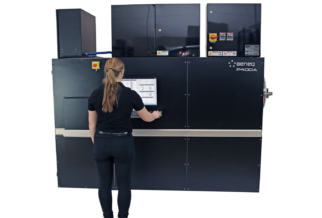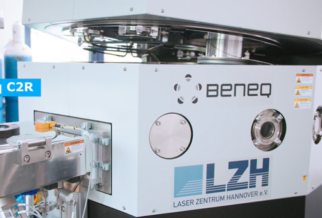ANTIREFLECTION COATINGS
How do antireflection (AR) optical coatings work?
Antireflective coatings are the most common type of optical coating. Learn about how antireflective coatings work and why ALD is an emerging technique for fabricating them.
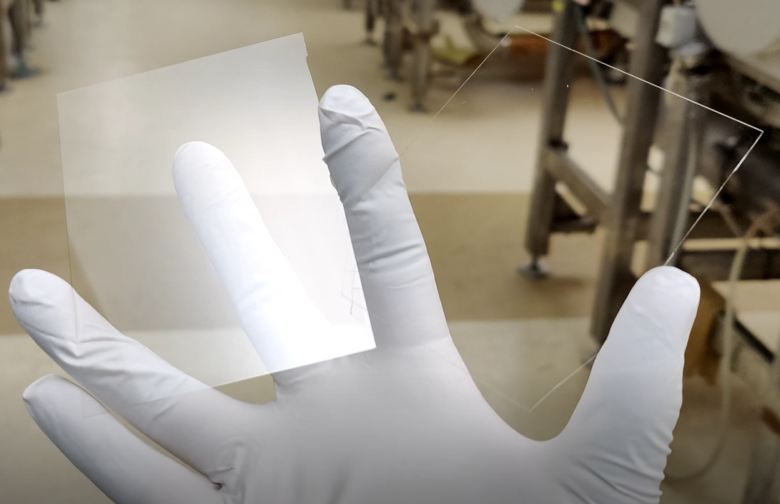
Antireflective coatings, also known as AR coatings or ARCs, are a ubiquitous category of optical coatings which are widely utilized in basic consumer products like eyeglasses as well as highly technical devices like LiDAR and space telescopes.
As the name suggests, an antireflective coating minimizes the amount of reflection from surface interactions on the substrate it coats.
Think of AR optical coatings as doing the opposite of what a mirror does. Instead of reflecting light, it allows as much light as possible through the surface it has been treated with.
When light interacts with a surface, some amount of light is transmitted, and some is reflected. This reflection is the result of differing indices of refraction between the two media the light is traveling through.
Take light entering through a piece of glass – the indices of refraction of air and glass are 1.00 and ~1.50 respectively. As a result of this interface, about 4% of light being reflected.
The larger the difference in index of refraction, the greater amount of light is reflected.

The goal of an AR coating is to minimize the amount of light reflected while maximizing the amount of light transmitted.
The easiest way to create an ARC is to use a material that has an index of refraction that is equal to the square root of the product of the original two indices of refraction.
For the example shown above this would mean a material with an index of refraction of 1.22 would be optimal. Now, only 1% of light would be reflected at each of the interfaces, resulting in 2% of light reflected in the entire system. Just the addition of the material halves the amount of reflected light.
To further increase the antireflective properties, an interference coating can be used. This antireflective coating exploits how light waves interfere. The simplest interference coating uses a layer of material where the thickness of the coating is equal to a factor of 1/4 the wavelength of incoming light divided by the material’s refractive index, known as a quarter-wave coating.
For instance, if the wavelength of incoming light is 400 nm and the ARC material is SiO2 (n=1.45), then the AR coating thickness could be 69 nm.
By doing so, the light that is reflecting from the interface of the coating and the substrate will be 180 degrees out of phase with the incoming light. These two waves will destructively interfere and eliminate reflection at the surface.
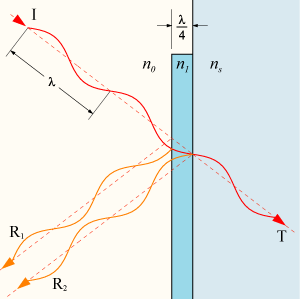
Thus far, these AR optical coatings only work for a single wavelength. To further improve ARCs and introduce broadband performance, multilayer AR coatings are often used.
A high-index material could be sandwiched between the low-index material and the substrate to create even better reflection interfaces, for example.
Usually ARCs are stacks of multiple alternating layers of low-index and high-index materials. By varying the materials and their thicknesses, one can achieve antireflective performance over a broad range of wavelengths instead of just one.
So what are the reasons for applying AR optical coatings with atomic layer deposition? Some of the most important are as follows:
Precision: When fabricating ARCs, depositing the correct thickness is extremely important. Small differences in material thickness could compromise the performance of the interference coatings by causing incomplete destruction or, in some cases, even constructive interference in some cases. ALD grows materials 1 Angstrom at a time, giving nanometer resolution thickness control.
Tunability: Material properties are highly tunable with ALD. By tweaking deposition parameters, like temperature or plasma power, properties like index of refraction and extinction coefficient can be changed. Even further tunability is possible with engineered materials and doping. This can result in high control of the reflection minima and bandwidth of the resulting ARC.
Purity: Films made with ALD have very low percentage of contaminants. Ultra-low impurity level allows negligible absorption and volume scattering.
Conformality: As optics geometries become smaller and more complex, the need for consistent properties across the entire surface become vital. Isotropic ALD processes provide perfectly conformal films on complex geometries from the micro to the macro scale. This is extremely important for applications where PVD struggles to provide uniform films, like on aspheric lenses or waveguides.
The innovative Beneq AtomGrass™ wide-angle, broadband antireflective coating has an average reflectance of less than 0.07% in the range of 380-1000 nm and performs consistently up to angle of incidence of 50 degrees.
This is a first-of-its-kind coating that incorporates all the needed benefits of an AR coating: low reflectance, broad band, and wide-angle performance. Learn more about its use in camera lens coatings here.
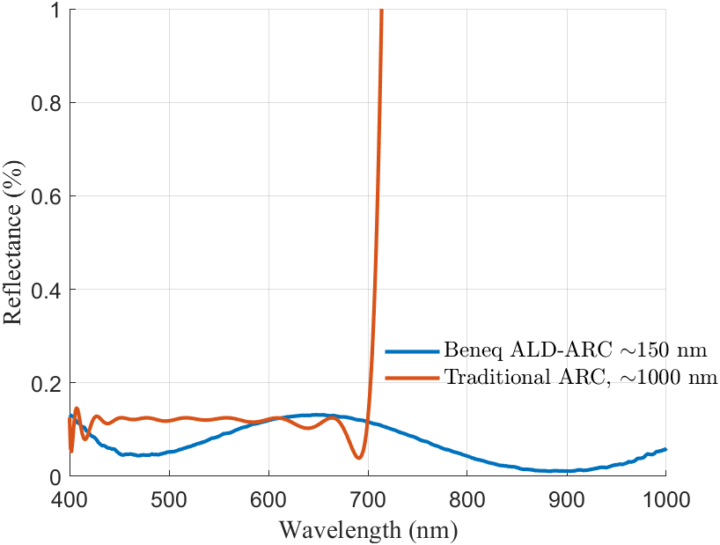
Explore Beneq’s ALD solutions and equipment on the Optical Coatings page!

